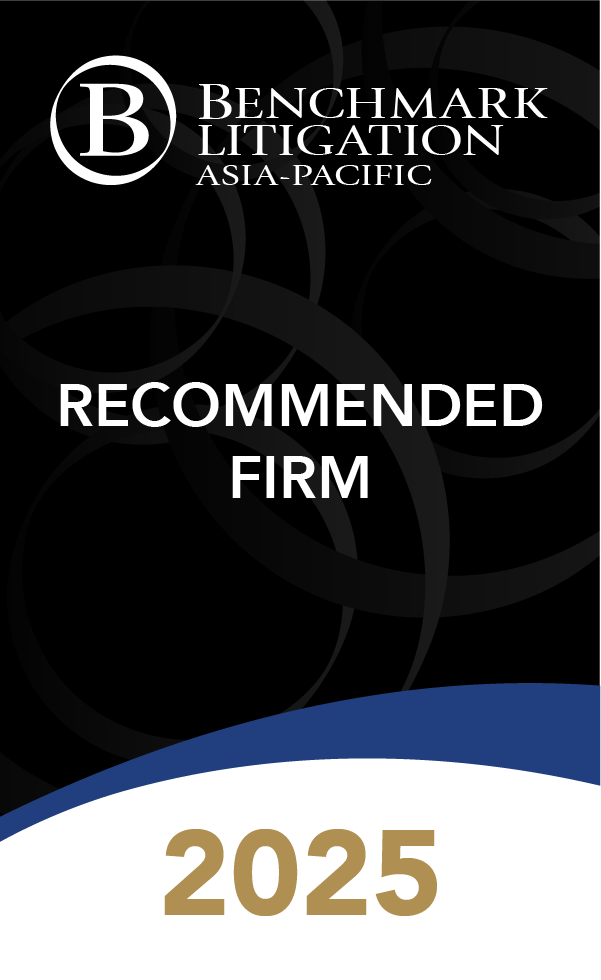Publications
WICA or stronger – Choosing between the Work Injury Compensation regime and Common Law

Injured workers who suffer an accident while arising out of and in the course of their employment have the option of bringing a claim under:-
- The Work Injury Compensation regime, codified through the Work Injury Compensation Act (“WICA”); or
- Common Law by commencing a claim in the Singapore Courts.
This does not only refer to an industrial or workplace accident, but (depending on the transport arrangement between the employee and his employers) may also include a road traffic accident that occurs while an employee is travelling to or from his place of work. A claimant ultimately has to decide whether to resolve / settle a claim under WICA or Common Law – he cannot obtain both.
In this article, we aim to highlight and discuss several pertinent pros and cons that a typical claimant may experience if he were to choose to pursue a claim using either WICA rules or Common Law, using the lenses of liability, quantum and procedural duration. However, as the ultimate inquiry is often highly factually specific, we would refrain from expressing any general preference or broad view on what may be more advantageous to a potential claimant. This article also does not address issues of insurance coverage or the enforceability of any award / judgment obtained.
WICA claims
(i) Liability under WICA
The High Court has previously described the WICA as “social legislation” that should be “interpreted purposively in favour of employees who have suffered injury during their employment” (see Pang Chew Kim v Wartsila Singapore Pte Ltd, [2011] SGHC 94; [2012] 1 SLR 15 at [27]). In effect, this often means that once a claimant can show that he comes under the WICA ‘umbrella’, there is no need to show negligence or any other legal fault on the part of the employers. This also means that a claimant under WICA is not penalized for contributory negligence on his own part leading towards the accident. All things being equal, a claim may be easier to establish / sustain under WICA than under Common Law.
(ii) Quantum under WICA
Apart from medical expenses and loss of wages while on medical leave, the quantum of compensation in a WICA claim is usually determined based on the tables set out in the Third Schedule of the WICA. 3 main factors are relied on to determine the compensation amount:-
- The claimant’s age on the next birthday;
- The claimant’s average monthly salary; and
- The percentage of permanent total incapacity (or death) resulting from the claimant’s injuries, as assessed by a medical professional.
The assessment of compensation under WICA is subject to statutory minimum and maximum limits that are reviewed from time to time.
(iii) Procedural duration
In ordinary WICA proceedings, an injured employee should notify the employers of the accident as soon as practicable, and a formal claim should be initiated within 1 year of the accident causing the injury (or, in the case of death, 1 year the date of death).
When the relevant income documents have been submitted and medical assessment has been prepared, the Ministry of Manpower can conduct a computation of the compensation amount due to the claimant. If either party objects to the computation, an inquiry process is initiated culminating in a formal hearing to determine the claim. All things being equal, a WICA claim usually concludes faster than a contested Common Law claim.
Common Law claims
(i) Liability at Common Law
Claims for personal injury under Common Law are usually founded upon the tort of negligence. In order to succeed, a claimant has to show that on a balance of probabilities, the Defendant(s) owed him a duty of care, had breached or failed to meet the reasonable standard of care expected of them and that this breach has caused damage (or injury) to him. As alluded to above, if the claimant is found to be partially at fault for causing the accident, a measure of contributory negligence may be attributed to him. If for example the Court finds that a claimant should bear 20% contributory negligence, then he will only be able to obtain 80% of the damages that are eventually assessed.
(ii) Quantum under Common Law
A claim under Common Law is usually assessed for general damages and special damages. Common heads of general damages include pain and suffering for injuries sustained, loss of earning capacity and/or loss of future earnings and future medical expenses. Common heads of special damages include incurred medical and transport expenses, as well as pre-trial loss of earnings or any other directly quantifiable losses that can be proved with supporting documents. All things being equal, the quantum of a Common Law claim may be higher than a WICA claim (subject to any percentage of contributory negligence that a claimant has to bear).
(iii) Procedural duration
For Common Law claims under the tort of negligence involving personal injury, a claimant has 3 years from the date of the accident to initiate a claim. The duration of a Common Law claim can vary greatly, depending on factors such as the complexity of the legal issues that need to be covered, the parties involved or the availability of documents etc. Most cases in Singapore are resolved at a pre-trial stage whether through parties’ negotiations or with the assistance of the Court-led mediation process. Where claims cannot be settled through through mediation or other negotiations, the Court will arrange for a trial where witnesses will attend to give their evidence. On average, a contested Common Law claim may take at least 12 to 15 months before liability and quantum are decided.
Conclusion
Both the WICA regime and Common Law claims offer potential claimants a viable route to obtain compensation for injuries suffered further to a work-related accident. If a potential claimant is faced with a choice between the 2, the pros and cons to be weighed often depend heavily on the factual circumstances at hand as these would affect the potential outcomes on liability and quantum. It would be best for a potential claimant to obtain legal advice on his intended course of action, so that an informed decision can be made taking into account the relevant facts, individual preferences and the various nuances that may be encountered.




